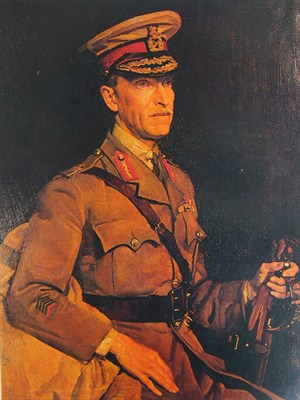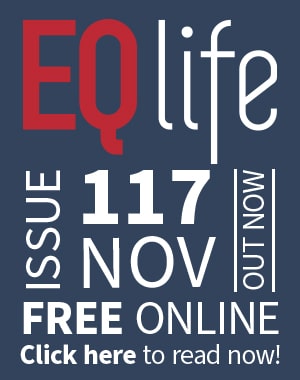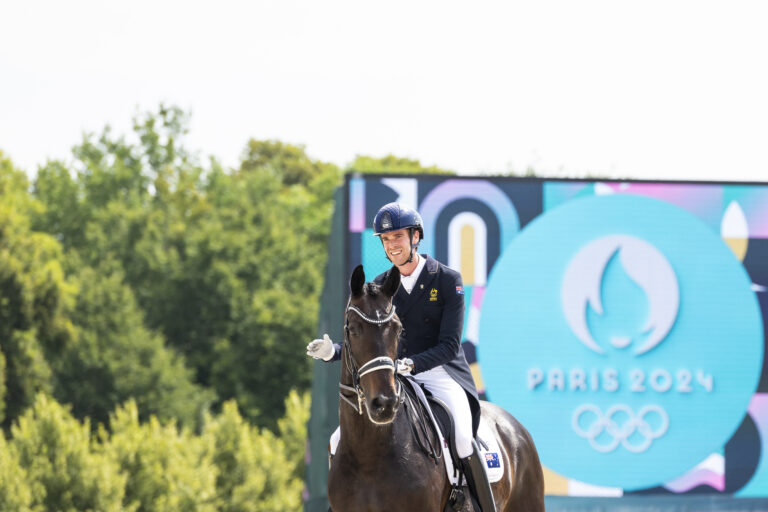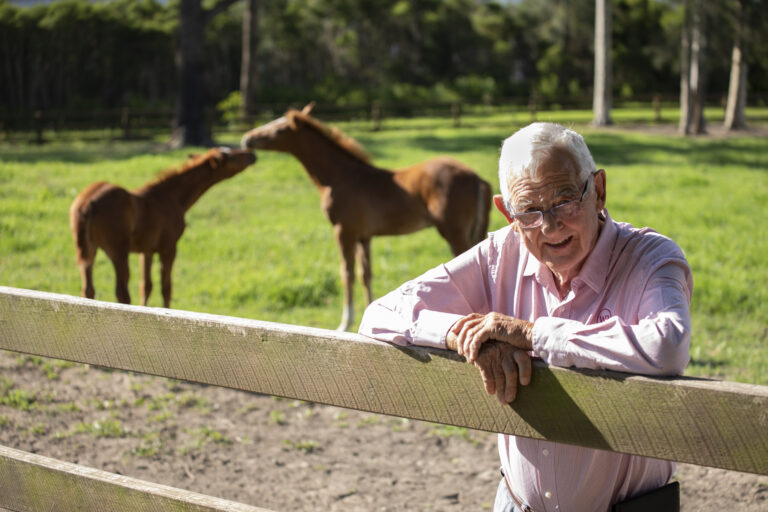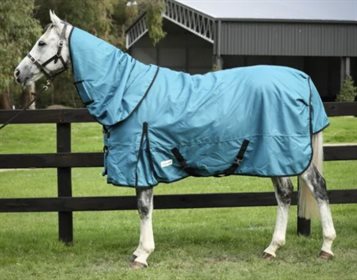This article has appeared previously with Equestrian Life. To see what’s in the current issue, please click here
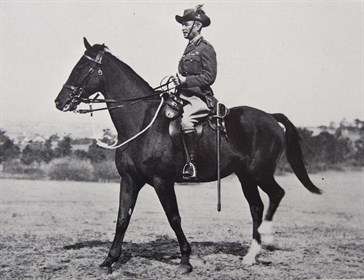
The inspector-General at a Light Horse Camp in Victoria, 1923
© Roland Perry
By Roland Perry
DESPITE THE MYTHOLOGY, the Arab Army directed by Major T.E. Lawrence (Lawrence of Arabia) in World War I was not the main force that dislodged the Turks after 400 years of brutal rule in the Middle East. Australian General Sir Harry Chauvel and his 33,000 horsemen defeated two Turkish armies from Cairo to Damascus and beyond, while Lawrence and the Arabs held and harassed one Turkish army in their forts on the Hejaz Railway, running from Arabia to Syria. Having defeated those two enemy armies, Chauvel and his horsemen swept across the Jordan Valley and helped Lawrence and Co put that third Turkish army asunder.
Lieutenant-General Sir Henry Chauvel
© Roland Perry
Chauvel’s secret weapon was not the tank that his fellow Australian Commander Sir John Monash used with such telling effect against the Germans in France; nor was it artillery that the Germans put almost all their chips on in their disastrous Great War gamble.
To everyone’s surprise in the Middle East, it was the ancient vehicle of battle going back thousands of years: the horse. In particular it was the Waler, a term derived from New South Wales, when in fact the breed was scattered and developed all over Australia. It stood from 12 to 19 hands, normally in the 14-16 range, and weighed 300-750kg, even more in a few cases. They were originally sired by English Thoroughbreds, from breeding mares that were often partly draught horse. Over the generations from about the 1820s, the Waler had the benefit of genetic input from the Welsh Pony, Timor Pony and Brumby. Arab stallions were in there too from the middle of the 19th century.
Veterinary scientist and breeding expert, Dr Ian Parsonson, described the breed as “strong-boned, with fine, clean legs and neck, short backs, long barrels and broad head”. They were a versatile, hardy animal, developed to withstand the rigours of Australia’s vast, semi-desert regions. Stockmen could muster cattle or round up sheep all day and then turn the horse loose at night to do its own thing. There was no need to corral or stable them against predators or the elements. They could live rough by night and do civilised rural jobs by day. As long as the Waler was looked after with food and water, its stamina was near limitless. The breed lacked aesthetics but made up for it in spirit, courage, sharpness and dependability.
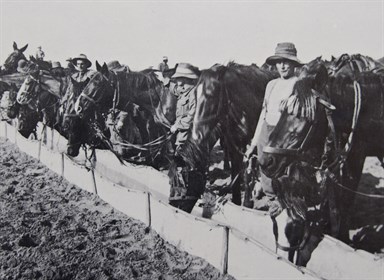
Watering horses in the desert
© Roland Perry
Since 1830, the British Army in India had provided a substantial export market for the Waler and thousands had been used in the Boer War, 1899 to 1901. In that conflict the troopers had to bring their own mounts. Many did in the Great War also, but most ? more than 150,000 ? were rounded up and branded by the army and then broken in (although not made actually battle-ready), before being sent to the Middle East.
Only packhorses were used on Gallipoli in 1915 because the terrain was impossible for any battle horse. But when the troopers returned to Egypt after that ignominious campaign and they regained the use of their steeds, the entire complexion of the war against the Turks changed. The Walers could travel with 130kg up to 80 kilometres in a day, and they could go as much as 65 hours without water. By comparison the British Army soldiers on foot could manage only eight kilometres, and even then the heat was too much for many of them. From 1916, the Anzac so-called Light Horse Regiments (troopers with rifles and bayonets) became the dominant force, and made up 70 per cent of the Desert Mounted Column, which took on the Turkish armies.
The prime example of how effective the horses were came late in the war (September 1918) when the Desert Column swept across the plains of Northern Palestine and Syria, catching armies, opposition cavalry and car convoys alike by surprise and beating them in scores of battles and charges. Earlier on August 4, 1916, under the brilliant command of Chauvel, 1,500 Light Horsemen took on an advancing Turkish Army of 25,000 at Romani on the Sinai desert’s Mediterranean coast. The general’s masterful deployment of trooper and horse held the Turks back. Had the enemy broken through at Romani, Egypt, then under British control, would have fallen. Instead the Turks retreated and were pursued by the Anzacs out of Sinai and into Palestine.
The Romani Battle was notable for the single most heroic performance of both trooper and horse in the entire war. In the heat of the fighting, four Tasmanians had their mounts shot from beneath them. Major Michael Shanahan galloped in on the big, brave Bill the Bastard. Shanahan ordered all the stranded troopers up onto Bill who then carried the five men out of the danger zone under fire. After dropping off the four troopers, Shanahan took his mount back into the fray. The major was shot in the thigh but kept on fighting the Turks with Bill until dawn when Shanahan collapsed. This mighty mount then carried his trooper back to Romani for medical treatment. Shanahan (who received the DSO) soon afterwards had the injured leg amputated. Bill’s reward for gallantry was to be retired from battle forever. Another notable instance of many triumphs was the Battle of Beersheba on October 31, 1917, when 800 Light Horse charged the guns of 4,500 entrenched Turks and had an overwhelming victory.
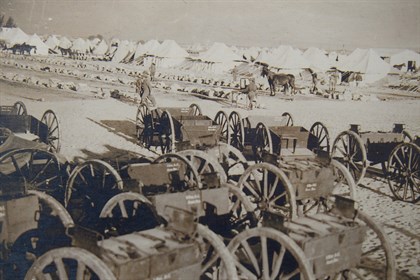
Cairo
© Roland Perry
A key to the highly successful predominantly Anzac campaign was the strong bond between trooper and horse. Every man could speak of a moment when their trusty mount saved their lives. There were many occasions when horses stopped in their tracks, literally, when danger lay ahead. It may have been a deep ravine that troopers could not see in the dark. There may have been an ambush of enemy soldiers hidden ahead. Then there were heroic examples of the horse trotting (but not galloping) wounded and unconscious troopers back to base (as with Shanahan and Bill the Bastard) again saving their lives.
No Walers were ever returned to Australia after their magnificent service. The British Army decreed that they would either be sent to the Indian Army (under British control) or destroyed. Many troopers had dreamt of returning home and riding on their horses triumphantly down the main streets of towns and villages. With those expectant thoughts shattered, some could not stand the alternatives and shot their mounts themselves. Many troopers who decided to do this said it was the worst moment of their lives. It remained a blot on an otherwise magnificent achievement in Australian history.
READ THE LATEST NEWS ARTICLES HERE

